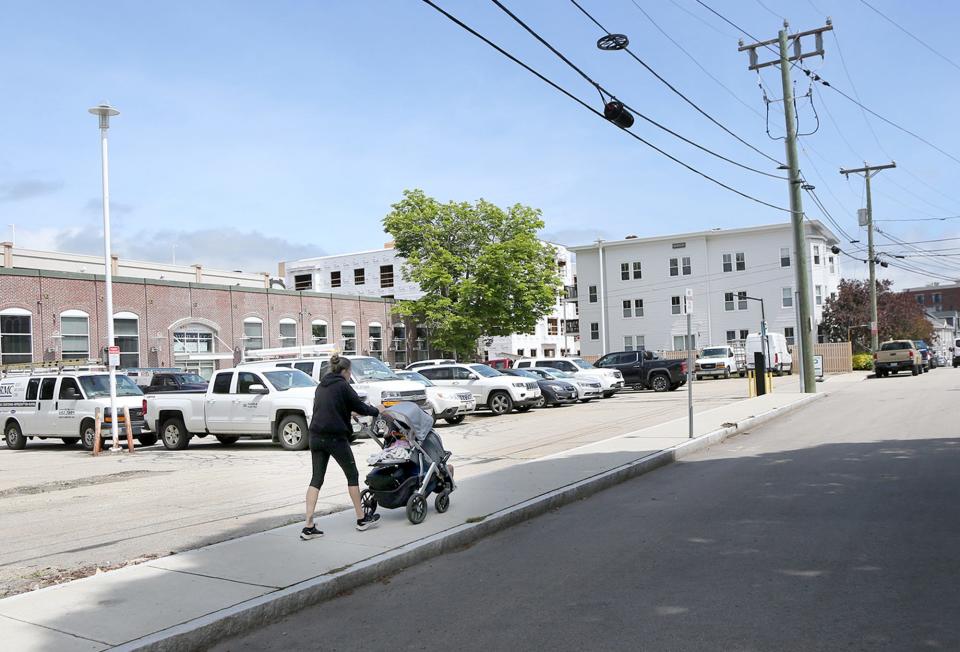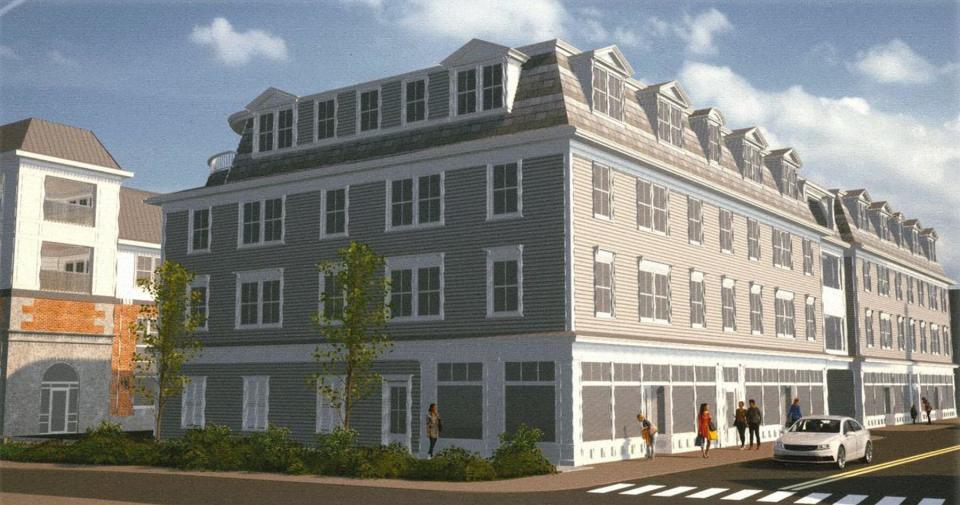Residents say Portsmouth Steam Factory redevelopment could destroy historic neighborhood
PORTSMOUTH — A number of Islington Creek residents turned out to a recent city Planning Board meeting to voice their concerns — or outright opposition — to a proposed redevelopment plan at the former site of the historic Portsmouth Steam Factory.
The residents waited more than three hours Thursday night to speak out about the proposed development by Steve Wilson and Hampshire Development Corp. that would put a total of 36 residential units in two three-story buildings at 361 Hanover St.
The historic site has been used by multiple businesses and industries since it was built in the 1800s, and was most recently the former home of the Heinemann Publishing Company, which moved out a few years ago.

Although many residents questioned the plan, attorney John Bosen, who represented the developer at Thursday’s board meeting, stressed the development team has “been able to design a project that fully complies with the ordinance, and requires no zoning relief.”
Nicole Lapierre, a Rock Street resident for almost 20 years, told the board she is a “direct abutter” to the proposed redevelopment project, stating she has “many concerns about the proposed structures.”

She believes the proposed development with its two buildings will increase the demand for on-street parking in her Islington Creek neighborhood.
She also questioned the decision to put the entrance to the development off Hanover Street, rather than facing Foundry Place, which is located on the back side of the property.
Neighbors raise concerns over traffic, building size
“I am requesting a traffic study because I wonder what impact this will have on Pearl Street,” Lapierre said. “I’m also concerned about the traffic on Rock Street as well, and Hanover for that matter.”
Fellow Rock Street resident Robin Husslage told the board; “Simply put the building being proposed along Hanover Street is too big for our historic neighborhood.”
She stated that she was “not against the development of this property, especially if it adds housing, which is great.”
But Husslage stated she was opposed to the project as it is now proposed.
“A new development should complement the buildings which surround it, not tower over them, dominating the small houses in our neighborhood,” she said.
She added the site “should be respectfully developed to complement our neighborhood, not destroy it.”
Husslage reminded the board that a group of neighbors “worked from 2018 to 2022 to have this property rezoned.”
They worked with several Planning Department representatives, including Nick Cracknell, the city’s former principal planner, until he left.
She noted Cracknell is “interestingly here.”
Cracknell is serving as a planning consultant for the development team, he and Bosen have said.
Sudbury Street resident Randy Wright said he was also not against the site being developed, but what’s being proposed there “is just too much.”
He and his wife have lived in their historic home for 37 years, and “when I moved into that neighborhood, I had a crack house next door.”
“I couldn’t even get an occupancy permit because my house was such a mess. But my wife and I had a vision and good strong backs,” he told the Planning Board.
Allowing the redevelopment as proposed, he said, would lead to “my neighborhood” being destroyed.

He shared that the historic neighborhood is already congested.
The “joke in the neighborhood is you’re only here if you live here or you’re lost, because everywhere you go you’ve got to turn around,” Wright said.
He urged the Planning Board to “stick up for us now,” adding “this can’t happen.”
Couple Sean Caughran and Marcie Vaughan are also direct abutters of the proposed redevelopment project.
They wrote a four-page letter to the Planning Board sharing the history of the neighborhood and their concerns about the proposed project.
Residents suggest damage to neighborhood's historic character

Their letter mentions in part that the redevelopment project’s “proposed design will negate the value of our home by overshadowing its historic presence, invading our privacy, impeding light and air and increasing artificial light shining into our home.”
The couple also appeared at the meeting and Vaughan stated that the property has “four graves” on the site dating back to the 1700s.
“I don’t see any mention of the Portsmouth Steam Factory burial ground,” on the developer’s plans, she said, adding “everything I can find says those graves still exist.”
72 apartments in Portsmouth: Project with 15 affordable units approved
Hanover Street resident Jill Dignan told the board she acknowledges that “development is inevitable and Portsmouth does need to find additional housing wherever it can.”
But that development, she said, “should be respectful to the existing neighborhood.”
She shared that “many neighbors are concerned about the massive increase in congestion that will disrupt the current character of the neighborhood.”
That could not only decrease the walkability in the neighborhood, she said, “but pose risk to the many children who live in the abutting neighborhoods.”
“I don’t know anywhere else in Portsmouth in a residential neighborhood where development has included a tunnel,” Dignan said in reference to a tunnel that’s being planned through a new building proposed on the site along Hanover Street. “It's unprecedented as far as I know. This alone should raise serious concerns about the project.”
What happens next with development
Despite the concerns raised by neighbors, the board voted unanimously to agree that the design review process – which the team appeared for Thursday night – was complete and to schedule a site visit and public hearing.
Board Chairman Rick Chellman explained that “the purpose of design review is not to finally approve anything in the project, (but) to say there’s sufficient information to proceed.”
“What it does for a developer, if design review is accepted and they file an application within 12 months, they’ve locked in the zoning,” Chellman explained. “It’s common process, especially for a large project.”
He added that “if you feel you just don’t like it, that’s really not enough from our perspective” to deny that design review is complete, he said.
Board member Paul Giuliano said the board “received a comprehensive application, we understand it, we also understand the concerns about it.”
He noted too that the board has not been able to “articulate a reason” to state that the design review process is not complete.
At the start of the hearing, Bosen said the zoning in the district permits “the 36 units we’re proposing, as well as the four to six commercial units that are required in the downtown overlay district.”
“Our building design also reflects the historic character of the neighborhood,” he told the board. “All in all this has been a a very carefully thought out project with traditional building design, historic preservation, and the use of structured or hidden parking.”
Developers have considered trying to get variances to allow them to put residential units on the first floor, instead of commercial, Bosen said.
But they would need variances from the Board of Adjustment to allow that to happen, he said.
“That has not been determined at this time,” Bosen added.
Engineer John Chagnon, who’s also part of the development team, said the existing former Heinemann building when redeveloped will feature 24 residential units.
The new building on Hanover Street will have 12 units, Chagnon said.
The parking will be located on parts of the the first floors of the buildings, with a few spaces in the courtyard between the two structures, he said.
This article originally appeared on Portsmouth Herald: Residents object to Portsmouth NH Steam Factory redevelopment plan
